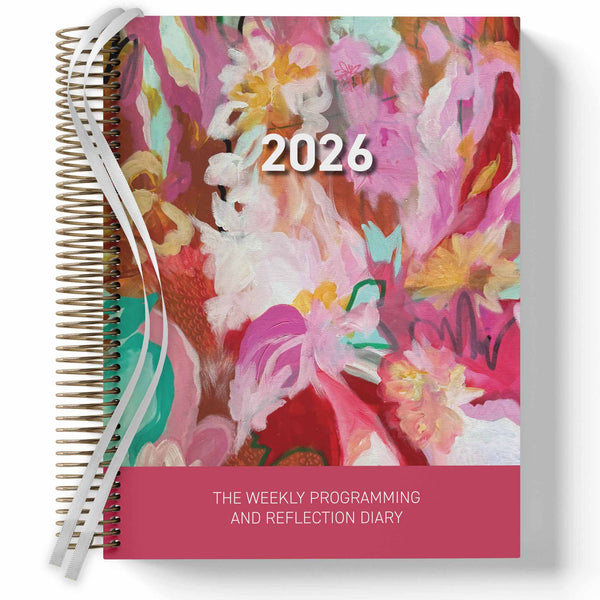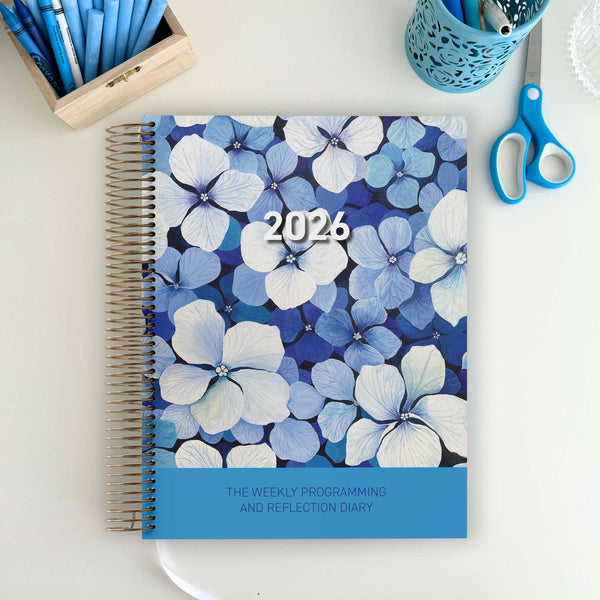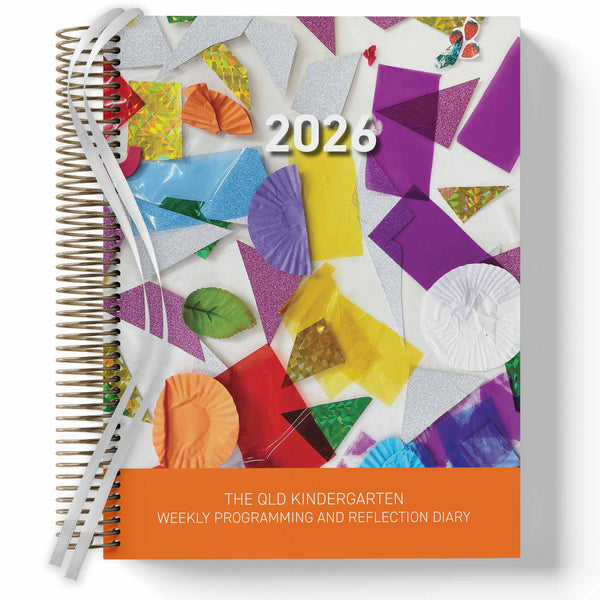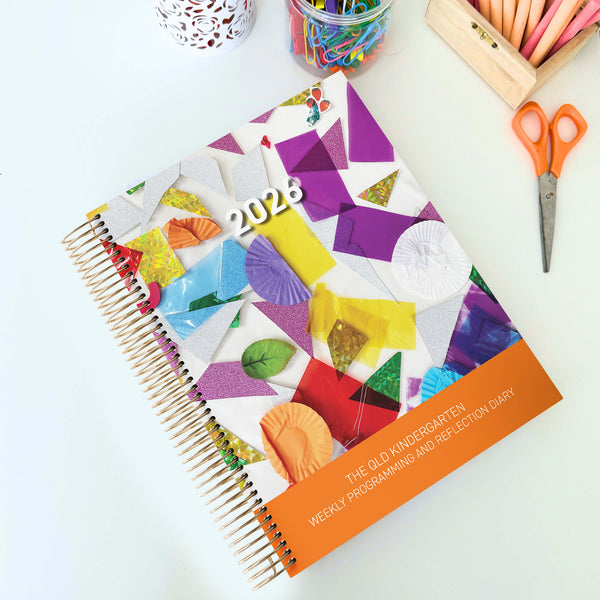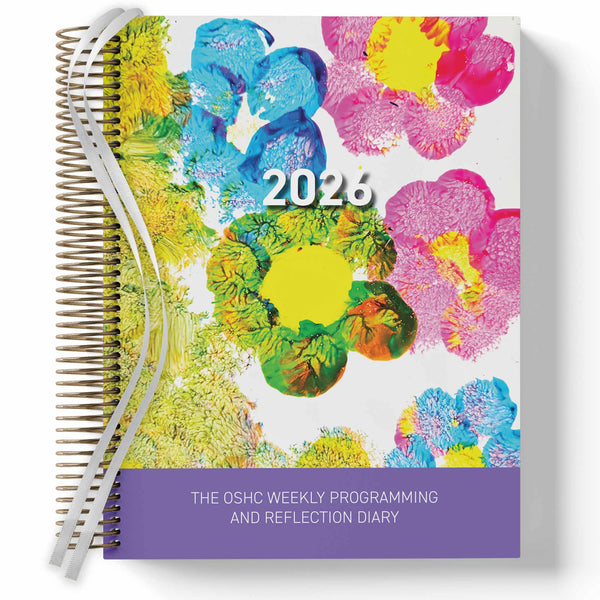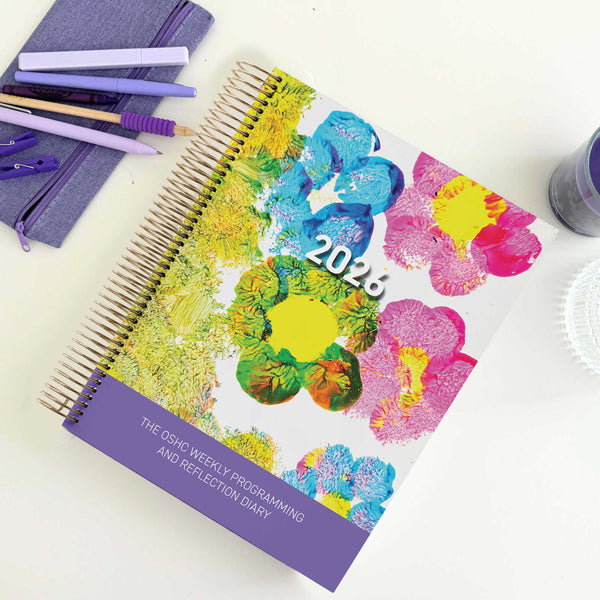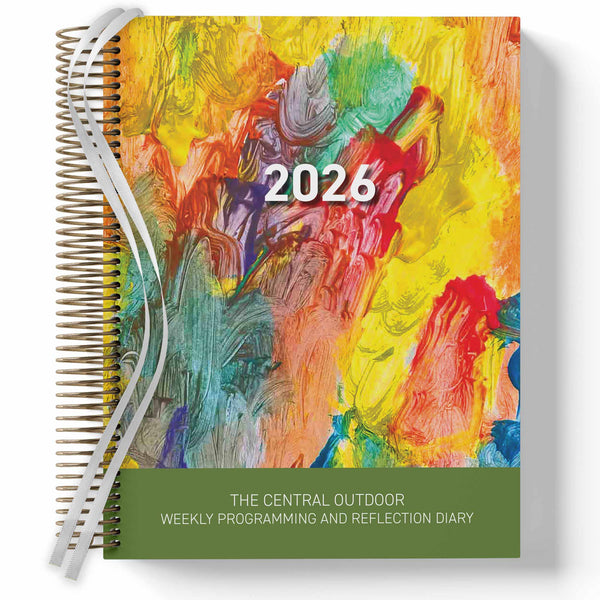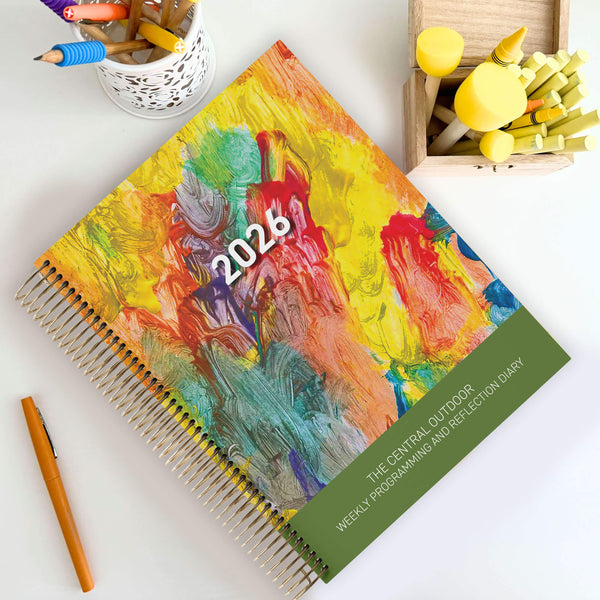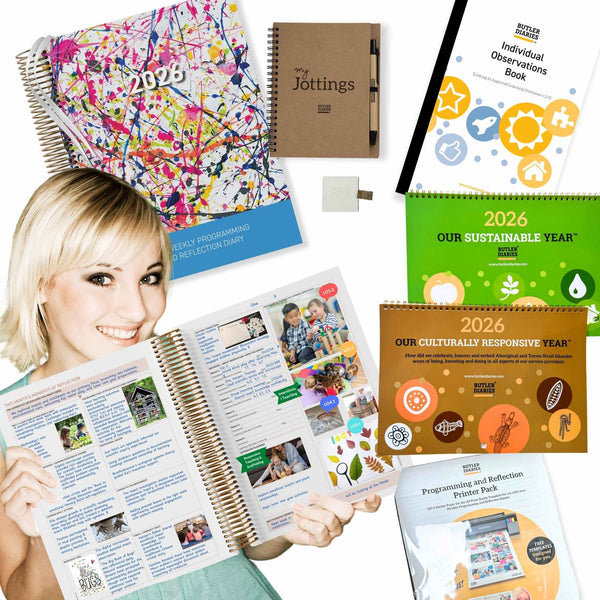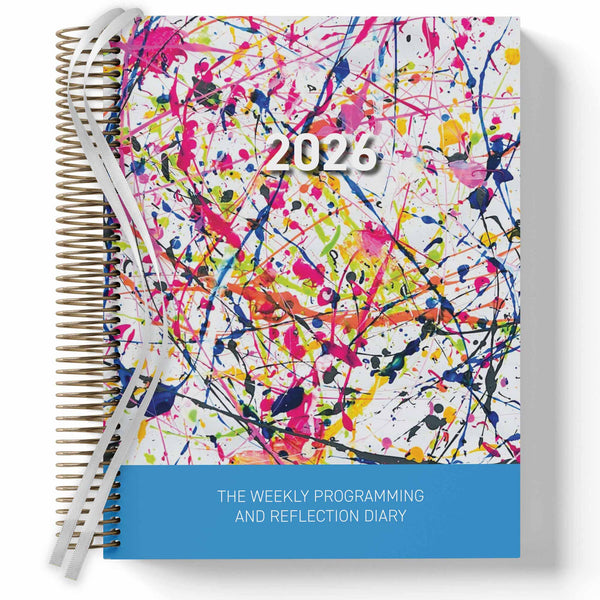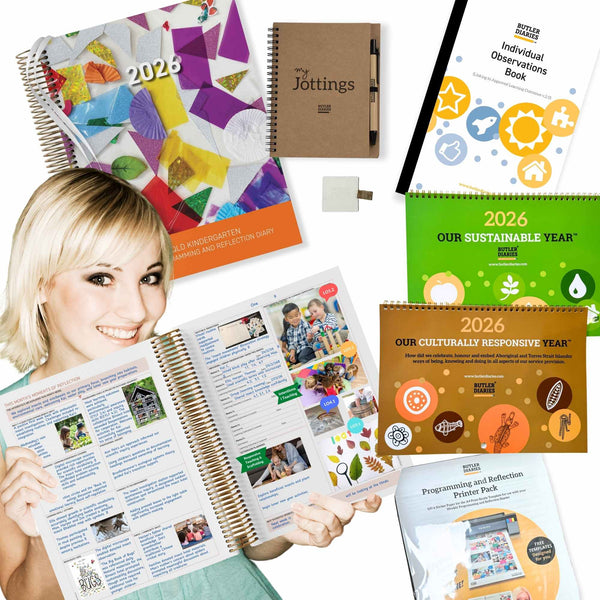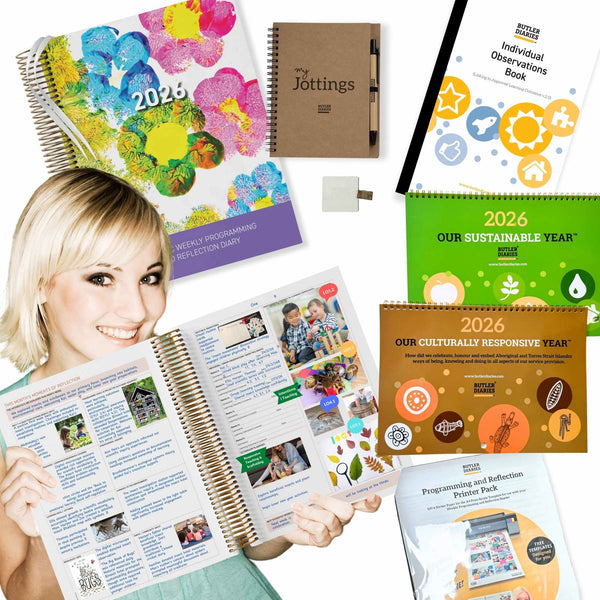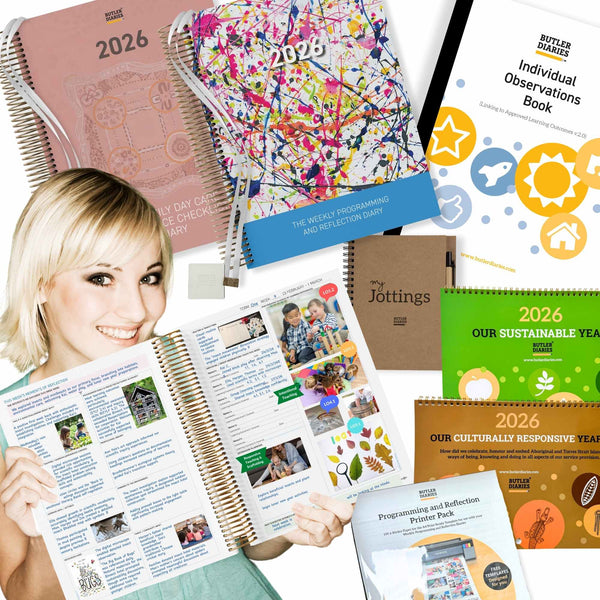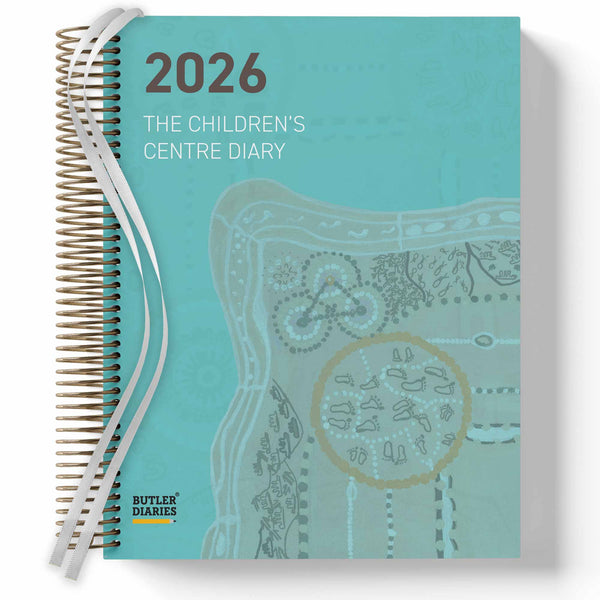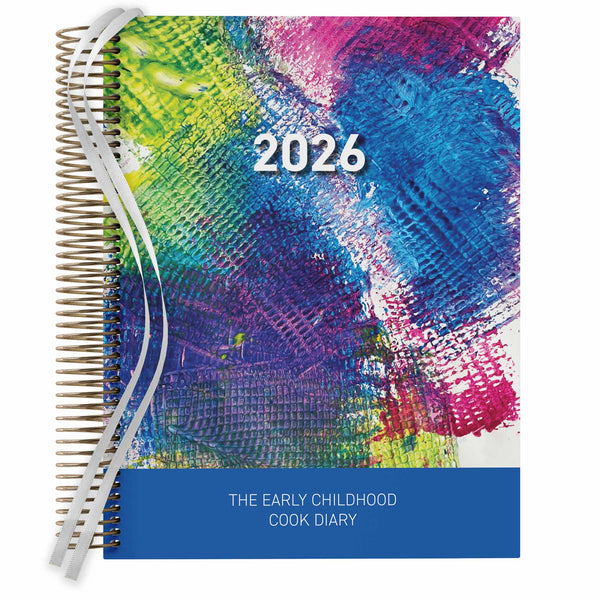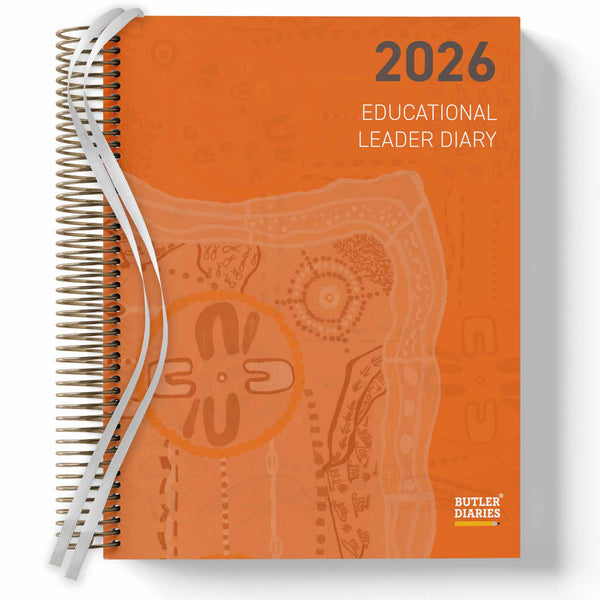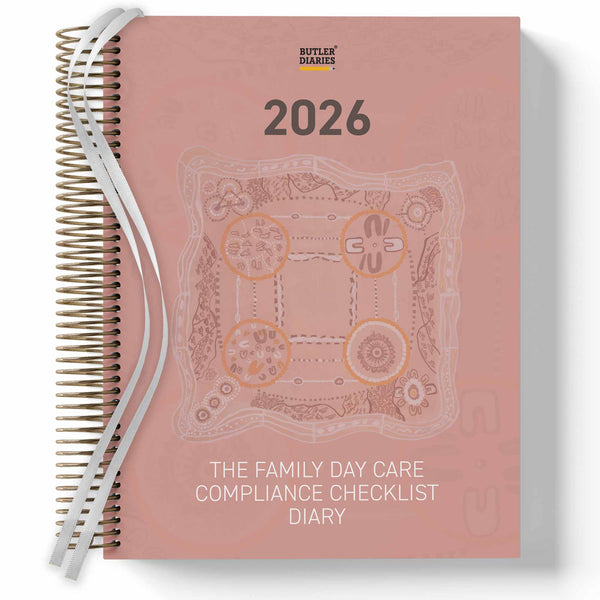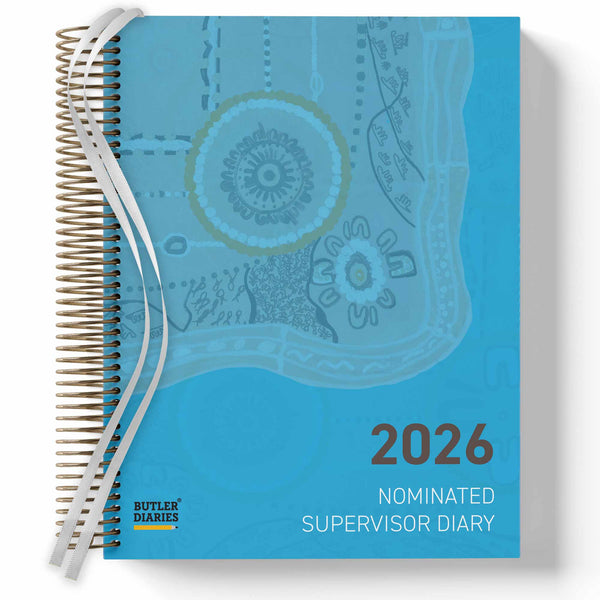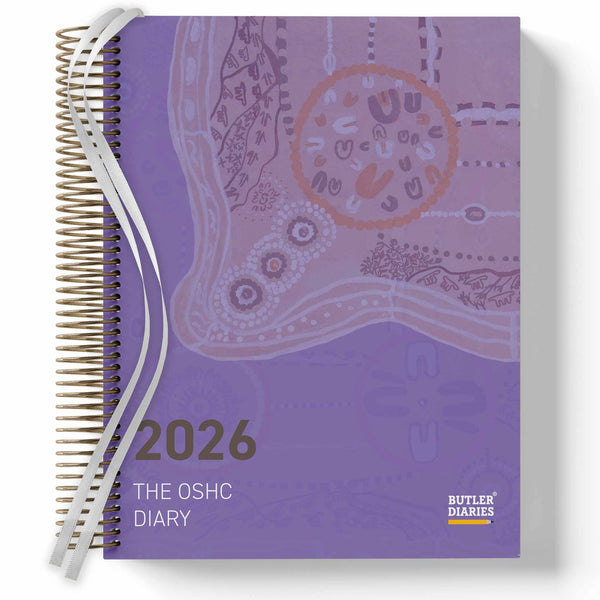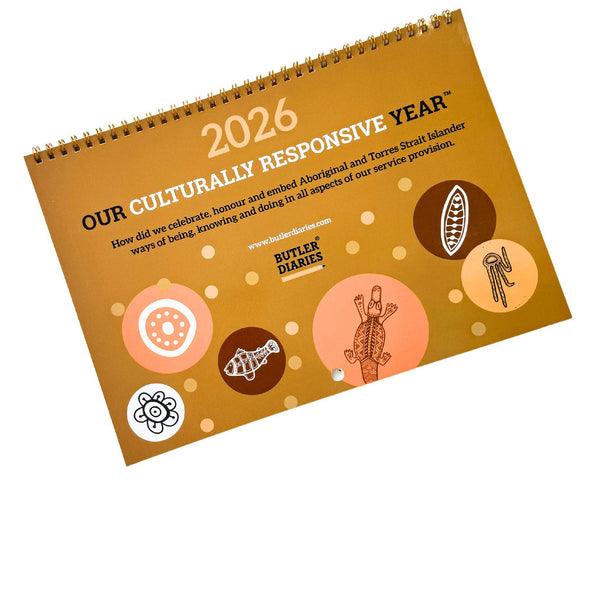Critical Reflection vs. Reflection: Using Your Weekly Programming and Reflection Diary Effectively
Reflection is a key practice in ECEC, helping educators assess and improve their teaching strategies, interactions, and environments. However, there is a distinct difference between reflection and critical reflection—both are important, but critical reflection goes deeper, prompting meaningful change and professional growth.
By using Butler Diaries' Weekly Programming and Reflection Diaries, educators can structure their reflective practice and ensure they are engaging in ongoing critical reflection. Let’s explore the differences between reflection and critical reflection and how to use your Diary effectively.
What is Reflection?
Reflection is the process of looking back on an experience, event, or practice and considering what happened. It often involves:
- Describing what took place in an activity or interaction.
- Identifying what worked well and what could be improved.
- Recognising children’s responses and engagement.
Reflection is valuable in daily and weekly programming as it helps educators assess their teaching methods and make small adjustments. However, it remains surface-level unless educators challenge their assumptions, biases, and broader influences on their practice.
What is Critical Reflection?
Critical reflection moves beyond simply looking back; it involves examining the "why" behind actions and considering how deeper factors (such as personal values, societal influences, and pedagogical theories) shape practice. It requires educators to:
- Question existing beliefs, routines, and decisions.
- Analyse the broader impact of practices on children, families, and the learning environment.
- Challenge biases and assumptions.
- Consider alternative approaches and perspectives.
Critical reflection aligns with the Early Years Learning Framework (EYLF) v2.0, which highlights the importance of questioning and evolving professional practice to ensure quality outcomes for children. It is also a key step in showing the Cycle of Planning. You can learn more about the Cycle of Planning here.
Using Your Weekly Programming and Reflection Diary for Critical Reflection
Your Weekly Programming and Reflection Diary is a powerful tool for embedding critical reflection into your routine. Here’s how to use it effectively:
1. Using the Reflection Spread
Ensure you are not just recording what happened but also asking why it happened and what it means for your future practice. A structured approach could include:
- What happened? (Brief description)
- What worked well? (Simple reflection)
- What needs improvement? (Observation-based)
- Why did this happen? (Critical reflection)
- What are alternative perspectives or approaches? (Critical thinking)
- What will I do differently next time? (Action-oriented reflection)
It does not need to be long and lengthy and these questions can be answered in a few sentences.
2. Link to EYLF v2.0 and Professional Standards
When critically reflecting, align your thoughts with EYLF principles, practices, and learning outcomes. Consider:
- How does this reflection connect to children’s agency and meaningful learning?
- Are there equity and inclusion considerations I need to address?
- What theories or pedagogical approaches support or challenge my current practice?
3. Use Open-Ended Questions to Deepen Reflection
To move beyond simple reflection, ask:
- How did my own values, biases, or experiences shape this situation?
- What voices were missing from this reflection? (e.g., children, families, co-educators)
- What assumptions am I making about children’s learning or behaviour?
- How does this practice support diversity, equity, and inclusion?
The prompts provided act as the areas of your program to critically reflect on and you use these questions to shape your critical reflections.
4. Collaborate and Discuss with Colleagues
Critical reflection is strengthened through professional dialogue. Use your Weekly Programming and Reflection Diary as a starting point for team discussions, linking reflections to service philosophy and improvement plans.
5. Track Progress and Revisit Past Reflections
Your Diary provides a record of growth and change. Regularly revisit past reflections to:
- Identify patterns in thinking and practice.
- See how past challenges were resolved.
- Assess the impact of changes made.
Examples of What Your Reflection Spread Could Look Like When Critically Reflecting
This example demonstrates how an educator might critically reflect within the reflection spread:
Was it a good/challenging week? Why?
This week was challenging due to multiple transitions in the room, particularly with new children settling in. Some children displayed heightened anxiety, and several routines took longer than expected. However, positive peer interactions and increased use of self-regulation strategies were observed.
Critical Reflection: Why did transitions feel more difficult this week? Was the environment set up to support self-regulation? Did educators provide enough verbal and visual cues to help children feel secure? What insight did fellow educators in the room have regarding transitions? Did we use family input appropriately to help support children?
Were programmed goals & projected EYLF outcomes achieved?
Most goals were achieved, particularly in relation to Outcome 1: Children have a strong sense of identity, as many children demonstrated confidence in expressing their needs. However, goals related to Outcome 3: Children develop a sense of wellbeing were not as evident, particularly in managing emotions during group activities.
Critical Reflection: How can we scaffold emotional regulation more effectively? Would a quiet space or additional mindfulness activities help? Are we providing enough sensory resources to support diverse needs? What do theorists say about how sensory activities and resources can support wellbeing?
Routine & Transition Comments
Transitions were more difficult than usual, with some children struggling to move from play to structured activities. Group times were more unsettled, with children losing focus quickly.
Critical Reflection: Are transitions too abrupt? How can we provide better cues and consistency? Could music or transition visuals assist? Is my sense of urgency dictating transitions?
Intentional Teaching/Learning Experiences Covered
Intentional teaching moments were strong in literacy and numeracy, particularly through small-group storytelling and counting activities. However, some children disengaged quickly, suggesting a need for more hands-on learning opportunities.
Critical Reflection: Are activities child-led enough? How can we incorporate more play-based, sensory-rich learning experiences? What intentional teaching strategies could I use to make literacy and numeracy experiences more engaging?
Professional Inquiry
As a team, we discussed strategies for improving transitions, particularly how to support children through secure attachment practices and visual supports. We also considered how to better involve families in settling-in strategies.
Critical Reflection: How do our own assumptions about transitions impact our approach? Are we providing enough predictability and consistency for children?
Learning Data
Observations showed increased peer collaboration but also highlighted the need for further support in conflict resolution.
Critical Reflection: How can we explicitly teach social problem-solving skills? Should we introduce role-play scenarios? What strategies could be use to encourage social problem-solving skills throughout the day?
Changes to Environment
We introduced a new cosy corner for self-regulation, which some children used effectively. However, others seemed unsure about when or how to use it.
Critical Reflection: Are children familiar with the purpose of the space? Do educators need to model its use more clearly? Are we utilising the environment as teacher as effectively as hypothesised by Montessori?
Resources Used
Books on emotions, transition visuals, and sensory tools were used, but additional social stories may help support emotional regulation.
Critical Reflection: Are resources developmentally appropriate? How can we ensure they are accessible and meaningful for all children? What feedback can we collect from families on the resources they use and align with?
Family and Community Input
Several families provided feedback on morning drop-offs being more challenging this week, aligning with our observations.
Critical Reflection: How can we strengthen the home-service connection? Should we explore parent workshops or daily reflection journals to support transitions? How can we ensure all families are contributing?
Extension Planning
Next week, we will focus on:
- Expanding mindfulness strategies during transitions.
- Providing additional social stories on emotions and peer interactions.
- Encouraging families to share strategies that work at home for settling-in.
Final Thoughts
Both reflection and critical reflection play a vital role in professional development. While simple reflection helps refine daily practices, critical reflection leads to deeper change, aligning with quality improvement and best practice in ECEC.
By intentionally using your Weekly Programming and Reflection Diary, you can embed critical reflection into your routine, ensuring your teaching remains responsive, inclusive, and evidence-based.
For more answers to frequently asked questions, check out this article.








